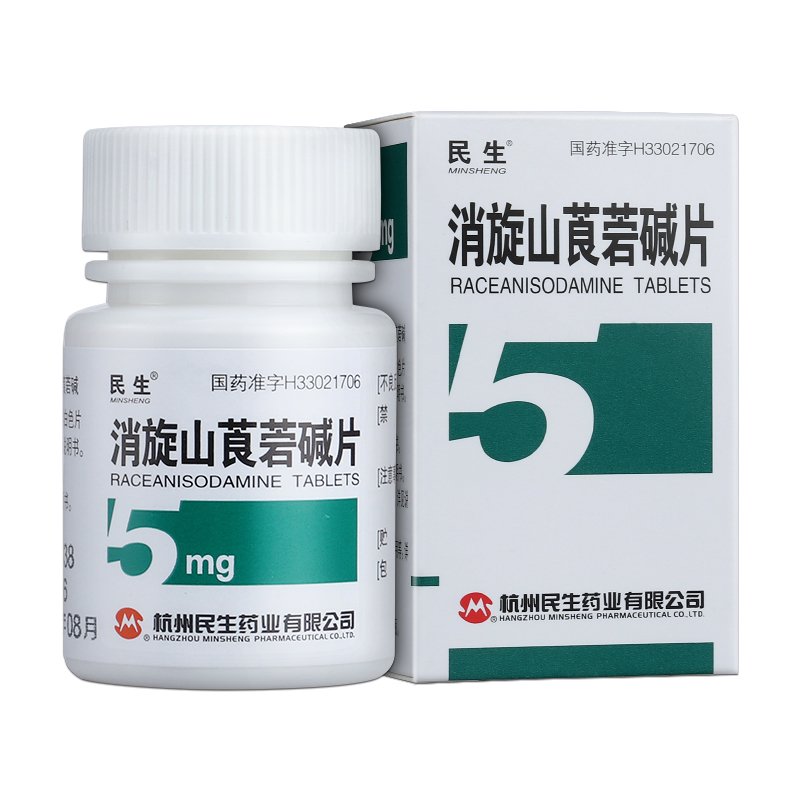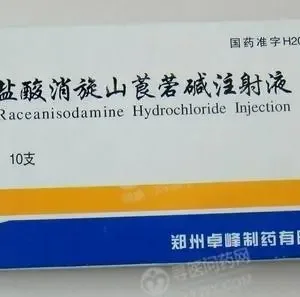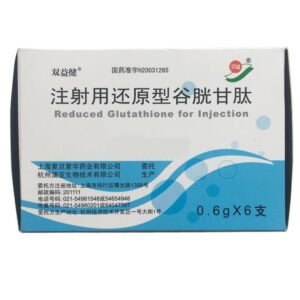Raceanisodamine
Function:
Used for cerebral thrombosis, cerebral embolism, cerebral vasospasm, angioneurotic headache (caused by vasospasm), and thromboangiitis obliterans. Used for gastrointestinal spasms and biliary tract spasms. Treats neuralgia and sciatica. For central retinitis and retinitis pigmentosa. For sudden deafness. Vertigo. It is used for infectious constitution, cardiogenic shock, shock pneumonia, fulminant meningococcal meningitis, and toxic bacillary dysentery. Organophosphorus poisoning, but not as effective as atropine. Eye drops can be used for pseudomyopia caused by ciliary muscle spasm.
1. Used for colic caused by spasm of the gastrointestinal tract, bile duct, pancreatic duct, and ureter, such as fulminant meningococcal meningitis, toxic dysentery, etc. (needs to be used in combination with antibiotics).
2. Circulatory disorders caused by vasospasm and embolism: cerebral thrombosis, cerebral infarction, paralysis, cerebral vasospasm, angioneurotic headache, thromboangiitis obliterans, etc.
3. Smooth muscle spasm: colic caused by gastric ulcer, duodenal ulcer, bile duct, pancreatic duct, and ureter spasm.
4. Various neuralgias: such as trigeminal neuralgia, sciatica, etc.
5. Dizziness.
6. Fundus diseases: central retinitis, primary retinitis pigmentosa, retinal artery thrombosis, etc.
7. Sudden deafness. Other types of deafness can be treated with new acupuncture therapy (small-dose acupoint injection).
8. It is also used for organophosphorus pesticide poisoning, but the effect is not as good as atropine.
9. Formulated into eye drops, it can be used for pseudomyopia caused by ciliary muscle spasm.
10. Used for bradycardia arrhythmia caused by increased vagus nerve excitability [3].
Dosage:
Adult oral administration: 5~10mg once, 3 times a day. Intramuscular injection: For general chronic diseases, 5~10mg once, 1~2 times a day, can be used for more than 1 month; for severe trigeminal neuralgia, the dose can be increased to 5~20mg once; for abdominal pain, 5~20mg once 10mg. Intravenous injection: To rescue infectious toxic shock, the dose is determined according to the condition, 10 to 40 mg at a time, repeated every 10 to 30 minutes if necessary. If the situation does not improve, the dose can be increased; when the condition improves, the interval should be gradually extended until the drug is stopped. For the treatment of thromboangiitis obliterans, 10 to 15 mg once a day. Intravenous drip: for the treatment of cerebral thrombosis, 30~40 mg per day, added to 5% glucose solution for intravenous drip. Oral administration for children: 1 to 2 years old, 2.5 mg once; 3 to 10 years old, 4 to 7.5 mg once; 11 years and above, 5 to 10 mg once; all above are 3 times a day. Intramuscular injection (common dosage): 0.1~0.2mg/kg once, 1-2 times a day. Intravenous injection: against shock and organophosphorus poisoning. 0.3~2mg/kg once, once every 15~30 minutes, and reduce the dose until the blood pressure recovers.
Adverse reactions:
Common adverse reactions include dry mouth, flushed face, mild pupil dilation, blurred near vision, etc. Some patients may experience increased heart rate and difficulty urinating, which usually disappear within 1 to 3 hours. Little damage to substantial organs such as liver and kidneys. In rare cases, after a single intramuscular injection of 5 mg, the pupil dilation effect is particularly sensitive and the vision is extremely blurred, lasting close to 10 days. Tonic spasms of limbs have been reported.
Drug contraindications:
If you are allergic to this product, it is contraindicated during pregnancy. It is contraindicated during lactation. Use with caution in children.
Share:
Products
Our offers
Health Classification
Let us work together to protect precious health































